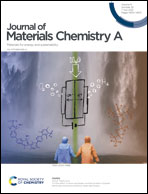Olivine LiMnxFe1−xPO4 cathode materials for lithium ion batteries: restricted factors of rate performances
Abstract
As a promising cathode material for high performance lithium ion batteries, olivine LiMnxFe1−xPO4 (LMFP) combines the high safety of LiFePO4 and the high energy density of LiMnPO4. However, there are still obstacles to overcome for achieving higher rate performance, especially its inherent low electronic conductivity and Li+ diffusion coefficient. Here, the restricting factors for realizing high rate performance LMFP cathode materials are reviewed systematically. The bulk properties that affect the internal ion transport and electronic conduction are thoroughly expounded, particularly the phase transition mechanism, lattice distortion, point defects, element doping, Fe/Mn ratio and particle morphology. Moreover, the effect of utilizing a carbon-based/non-carbon material coating for improving the interface structure on rate performance is discussed comprehensively. A particular emphasis is placed on the design of LMFP-based batteries with high rate capability as well from the aspect of cell preparation technology, including the electrolyte selection and electrode design. Finally, on the basis of state-of-the-art understanding of bulk properties, the interface structure and cell preparation engineering, several technical challenges and research trends in improving the rate performance of LMFP cathode materials are proposed.



 Please wait while we load your content...
Please wait while we load your content...